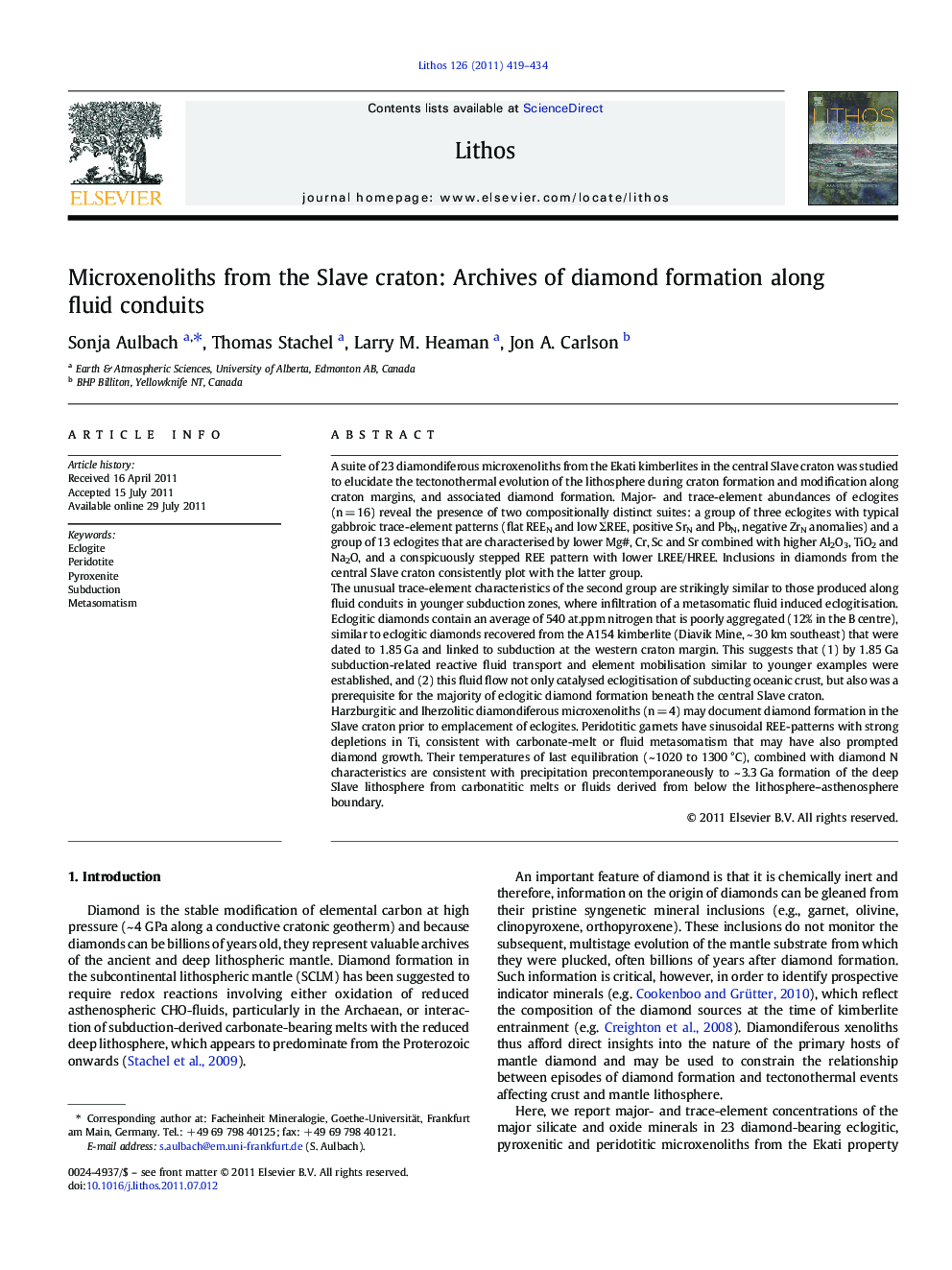| کد مقاله | کد نشریه | سال انتشار | مقاله انگلیسی | نسخه تمام متن |
|---|---|---|---|---|
| 4716726 | 1638716 | 2011 | 16 صفحه PDF | دانلود رایگان |

A suite of 23 diamondiferous microxenoliths from the Ekati kimberlites in the central Slave craton was studied to elucidate the tectonothermal evolution of the lithosphere during craton formation and modification along craton margins, and associated diamond formation. Major- and trace-element abundances of eclogites (n = 16) reveal the presence of two compositionally distinct suites: a group of three eclogites with typical gabbroic trace-element patterns (flat REEN and low ΣREE, positive SrN and PbN, negative ZrN anomalies) and a group of 13 eclogites that are characterised by lower Mg#, Cr, Sc and Sr combined with higher Al2O3, TiO2 and Na2O, and a conspicuously stepped REE pattern with lower LREE/HREE. Inclusions in diamonds from the central Slave craton consistently plot with the latter group.The unusual trace-element characteristics of the second group are strikingly similar to those produced along fluid conduits in younger subduction zones, where infiltration of a metasomatic fluid induced eclogitisation. Eclogitic diamonds contain an average of 540 at.ppm nitrogen that is poorly aggregated (12% in the B centre), similar to eclogitic diamonds recovered from the A154 kimberlite (Diavik Mine, ~ 30 km southeast) that were dated to 1.85 Ga and linked to subduction at the western craton margin. This suggests that (1) by 1.85 Ga subduction-related reactive fluid transport and element mobilisation similar to younger examples were established, and (2) this fluid flow not only catalysed eclogitisation of subducting oceanic crust, but also was a prerequisite for the majority of eclogitic diamond formation beneath the central Slave craton.Harzburgitic and lherzolitic diamondiferous microxenoliths (n = 4) may document diamond formation in the Slave craton prior to emplacement of eclogites. Peridotitic garnets have sinusoidal REE-patterns with strong depletions in Ti, consistent with carbonate-melt or fluid metasomatism that may have also prompted diamond growth. Their temperatures of last equilibration (~ 1020 to 1300 °C), combined with diamond N characteristics are consistent with precipitation precontemporaneously to ~ 3.3 Ga formation of the deep Slave lithosphere from carbonatitic melts or fluids derived from below the lithosphere–asthenosphere boundary.
► Trace elements of diamondiferous eclogite microxenoliths reveal diamond formation processes.
► REE patterns similar to those in eclogites along modern subduction-related fluid conduits.
► Garnet and clinopyroxene inclusions in diamonds overlap the eclogite microxenoliths.
► Eclogitic diamonds form by reactive fluid transport and element mobilisation in subduction zones.
Journal: Lithos - Volume 126, Issues 3–4, October 2011, Pages 419–434